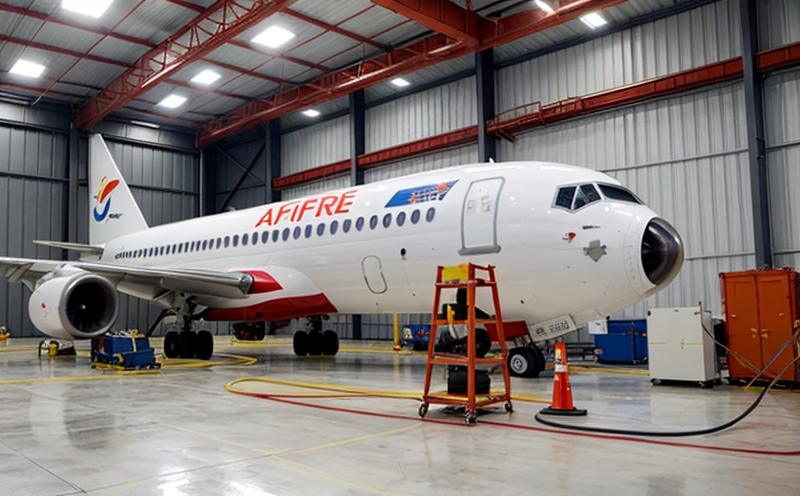Evaluation of Smoke Propagation in Aircraft Cabins
The evaluation of smoke propagation within aircraft cabins is a critical aspect of fire safety testing. This service ensures that materials used in cabin interiors are inherently resistant to the spread of smoke and associated by-products during a fire event, thereby safeguarding passengers and crew in case of emergencies.
Smoke propagation in an enclosed space like an aircraft cabin can have severe consequences if not properly managed. Understanding how different materials interact with each other when exposed to heat and flames is essential for developing safer cabin designs. This evaluation involves simulating real-world conditions using controlled tests that mimic the types of fires likely to occur aboard commercial flights.
At Eurolab, our expertise lies in providing comprehensive evaluations tailored specifically towards aerospace applications. Our state-of-the-art facilities employ advanced technology and methodologies recommended by international standards such as ISO 16927-1 and ASTM E537. These guidelines provide clear parameters for conducting these tests effectively.
During the evaluation process, various aspects are considered including but not limited to material composition, thickness, surface finish, and overall design of interior components. Specimens prepared according to specified dimensions undergo rigorous testing under prescribed conditions designed to replicate actual flight scenarios.
The test setup typically includes a controlled environment chamber where specimens are exposed to high temperatures accompanied by the introduction of an ignition source. The resulting smoke is then captured, analyzed, and quantified based on predefined criteria established in relevant standards.
Our team at Eurolab ensures accurate measurement and interpretation of results through sophisticated instrumentation capable of detecting even minute changes in emitted smoke characteristics. This data forms the basis for assessing compliance with required safety levels set forth by regulatory bodies worldwide.
Smoke propagation tests play a vital role not only in ensuring passenger safety but also in meeting stringent certification requirements imposed by aviation authorities globally. By adhering strictly to these protocols, manufacturers can demonstrate their commitment to producing high-quality products that meet international standards of excellence.
- Material Selection: Proper selection ensures durability and resistance against adverse environmental factors while maintaining aesthetic appeal.
- Design Optimization: Evaluations aid in identifying potential improvements needed to enhance smoke barrier properties without compromising structural integrity or functionality.
Eurolab Advantages
At Eurolab, we pride ourselves on delivering unparalleled quality and reliability across all our services. For aerospace fire safety testing, especially concerning smoke propagation in aircraft cabins, here are some key advantages:
- ISO/IEC Accreditation: Our laboratories hold ISO 17025 accreditation, ensuring that every test conducted meets the highest industry standards.
- Expertise & Experience: With years of experience in performing similar evaluations for leading aviation companies worldwide, our teams bring extensive knowledge to each project.
- Advanced Technology: Utilizing cutting-edge equipment and software allows us to achieve precise measurements and detailed analyses.
Why Choose This Test
Evaluating smoke propagation in aircraft cabins is crucial for several reasons. Firstly, it directly impacts passenger safety during emergency situations where rapid evacuation might be necessary. Secondly, compliance with regulatory requirements ensures that products meet stringent safety criteria set forth by aviation authorities.
By investing in such evaluations early in the design phase, manufacturers can avoid costly recalls later on due to non-compliance issues or poor performance under expected conditions. Additionally, successful completion of these tests enhances brand reputation among consumers who prioritize safety above all else.





